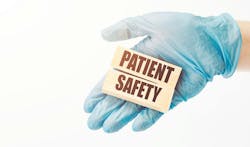Leapfrog Group: Healthcare-Acquired Infection Rates Decline Post-Pandemic
The latest grades from the Leapfrog Group, a nonprofit patient safety organization, show hospitals reducing healthcare-acquired infections (HAIs) post-pandemic, after significant increases in infection rates during the COVID-19 pandemic.
The latest data shows that over 85 percent of hospitals have improved performance on at least one of the three dangerous infections the Hospital Safety Grade accounts for. That includes:
• 19 percent of hospitals have improved in all three infection measures,
• 66 percent of hospitals have improved at least one infection measure, and
• 16 percent of hospitals have continued to worsen or made no improvement.
The new grades are the first to reflect hospital performance post-pandemic. Nationally, hospitals significantly reduced three HAIs—Methicillin-resistant Staphylococcus aureus (MRSA), central line-associated bloodstream infections (CLABSI) and catheter-associated urinary tract infections (CAUTI)—after CLABSI, MRSA and CAUTI reached a 5-year high during the pandemic. In the fall 2022 Safety Grade cycle, hospitals experienced a 35 percent increase in the average standard infection ratios (SIRs) of CLABSI and MRSA from pre-pandemic levels as well as a 20 percent increase in CAUTI.
“Now that we have pre- and post-pandemic data for patient safety measures, we are encouraged by the improvement in infections and applaud hospitals for reversing the disturbing infection spike we saw during the pandemic,” said Leah Binder, president and CEO of the Leapfrog Group, in a statement. “However, there’s still more work to be done. It’s deeply concerning that patient reports about their health care experience continues to decline.”
In this cycle of grades, nearly 30 percent of hospitals earned an “A,” 24 percent earned a “B,” 39 percent earned a “C,” 7 percent earned a “D,” and less than 1 percent earned an “F.”
Utah is the state with the highest percentage of “A” hospitals in the country this fall. After Utah, the other top 10 states for “A” hospitals are: Virginia, North Carolina, Pennsylvania, South Carolina, Connecticut, Montana, Tennessee, Florida and Texas. States with the least favorable performance are Vermont, Wyoming, Delaware, Washington, DC, and North Dakota, where no hospitals earned an “A.”
The Leapfrog Hospital Safety Grade also includes five patient experience measures that evidence suggests are closely associated with patient safety issues. The scores for the measures are calculated using patient responses to a national and standardized patient survey following a hospital visit. Patients are asked to rate their experience of nurse communication, doctor communication, staff responsiveness, communication about medicine, and discharge information. Nationally, patient experience scores worsened for the second year in a row, and all states experienced a significant decline in reported patient experience from the fall 2021 to the fall 2023 Safety Grade.
Patient experience reports show the most significant declines in the categories of “communication about medicines” and “responsiveness of hospital staff,” both of which correlate with preventable medical errors according to recent studies.
“In talking with hospital leaders, we believe staffing shortages are one key reason for the continued decline,” said Binder. “Many hospitals are innovating to help make patient experience better, which is critical because these results are disheartening and unsustainable.”
The Leapfrog Hospital Safety Grade is free to the public, and grades are updated biannually in the fall and in the spring. More information about the Hospital Safety Grade, including details on individual hospital grades and state rankings, are available at HospitalSafetyGrade.org.


